Updated on May 8, 2024

Imagine you are the founder of a SaaS company that has just built the perfect product that will solve a very particular problem for the customer. But how do the customers know that it is YOUR product that they need? And why will they move away from the competition, which also has a similar product?
This is where implementing a great product adoption strategy comes in.
In this article we will learn:
- What is Product adoption?
- Why is Product adoption important?
- Key metrics to track in Product adoption.
- Factors affecting product adoption?
- Steps in a Product adoption Strategy
- Product Adoption Curve – What you need to know

What is Product Adoption?
Product adoption, also known as user adoption refers to the point where the intended benefits of the product align with the expectations and needs of the users.
It’s the critical moment when customers recognize the value proposition of the product and decide to incorporate it into their routine and workflow.
Here are some indicators to know that your product adoption is improving –
- Increased Usage: Customers are using your product more frequently and for longer durations – a higher Daily Active Users (DAU) and Monthly Active Users (MAU) count.
- Reduced churn rate: Customers moving out of your product reduces indicating higher retention and continued engagement.
- Higher NPS/CSAT scores – Customers provide favorable feedback about your product
- Higher Referrals – Satisfied customers refer others to your product, driving organic growth through word-of-mouth.
- Increased Upgrades – Customers opt for premium features, leading to higher revenue generation and showcasing their confidence in your product.
We will cover it in detail in the upcoming sections but let’s first understand why product adoption is important for your business.

Why is Product Adoption important?
Better product adoption rate means higher conversion rate, higher retention rate, lower churn rate, and hence higher revenue.
Acquisition is just one part of the game. Once you have acquired customers, it is critical that you keep them engaged by providing a great first experience using the product. This is done by finding out the actions that users find the most value in as soon as they start using the product, and then encouraging them to repeat these actions.
Product retention is important because you have a predictable source of revenue for your business.
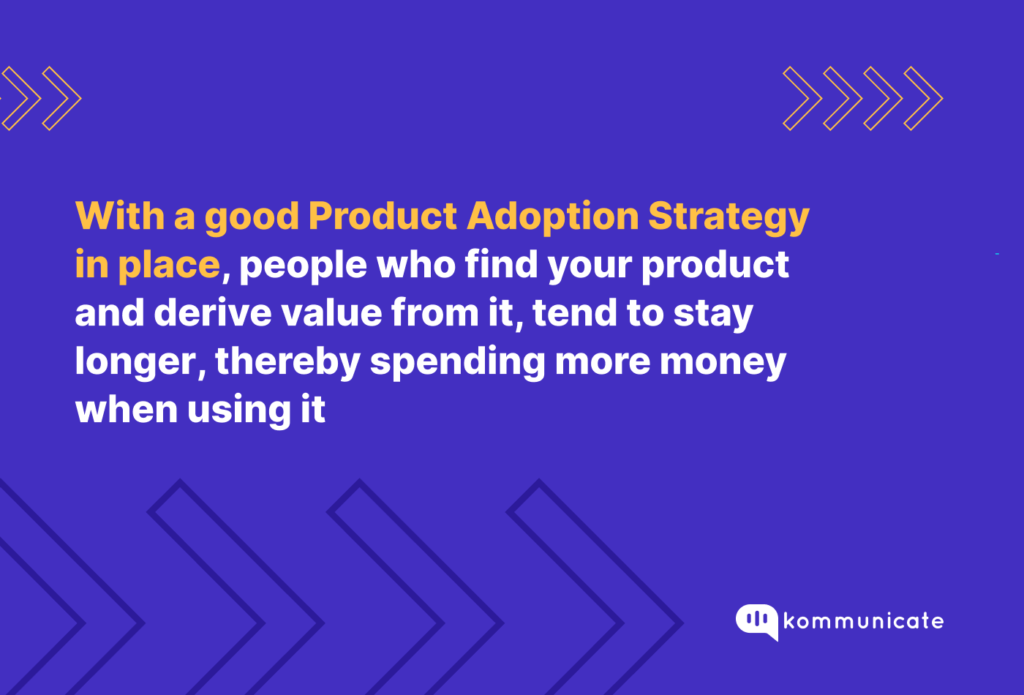
Slack – A classic case study of good Product Adoption
Slack is a great example of a product where a slight increase in product adoption rate had a big impact on its bottom line. A study by Drift found that a small increase of 1% in Product Adoption rate led to a 5% increase in revenues for Slack.
Slack is a classic example of a company that used the product-led model to achieve growth. Payment is a significant barrier for entry, and Slack, knowing this, decided to build a product that had high “stickiness” value.
Offering a freemium model was just the beginning of the game for Slack. Slack also upped the notch by offering a great onboarding experience that made users aware on how to use the product. Interactive tutorials, superb documentation, an ever helpful support team – Slack didn’t leave any stone unturned.
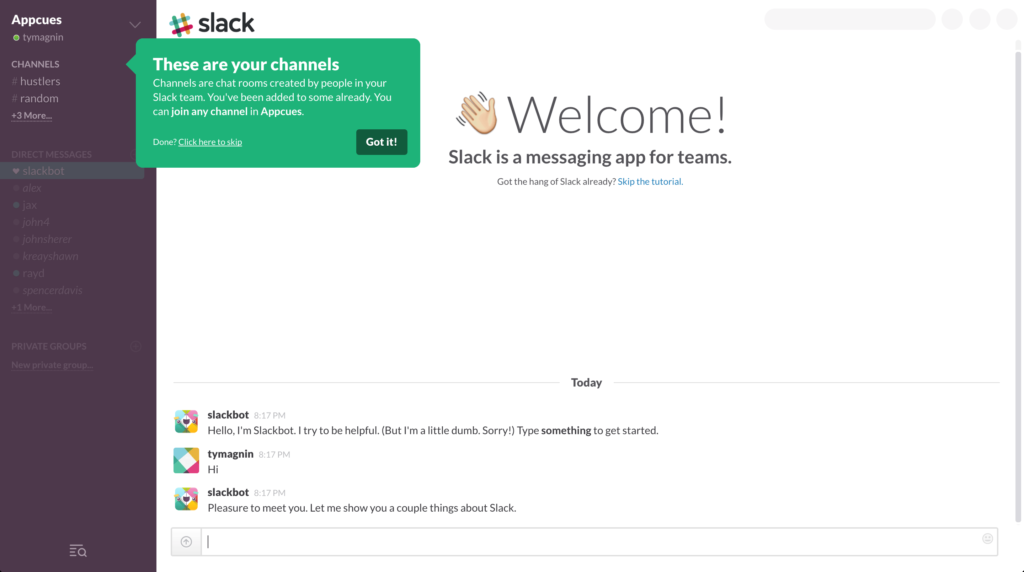
Suggested channels is another cool feature that Slack began to offer new adopters of the product. Slack also integrates with a host of popular apps such as the Google Suite.
All in all, Slack’s product adoption strategy boiled down to one thing – build an amazing product, and then encourage people to use it and tell it to their friends.
It worked too. Slack was acquired by Salesforce for $27.7 billion in 2020.
So you now know that Product Adoption is extremely important, if you want to make people aware about your product and get them to use it. So what are the key metrics that you must track, if you want to know that your Product Adoption rate is working?
We explore that in this next section.
Key Metrics to Track in Product Adoption
Product Adoption Rate or PAR is a key indicator of whether a product is getting adopted by its users. It gives you the percentage of users who have adopted a particular product or a product feature.
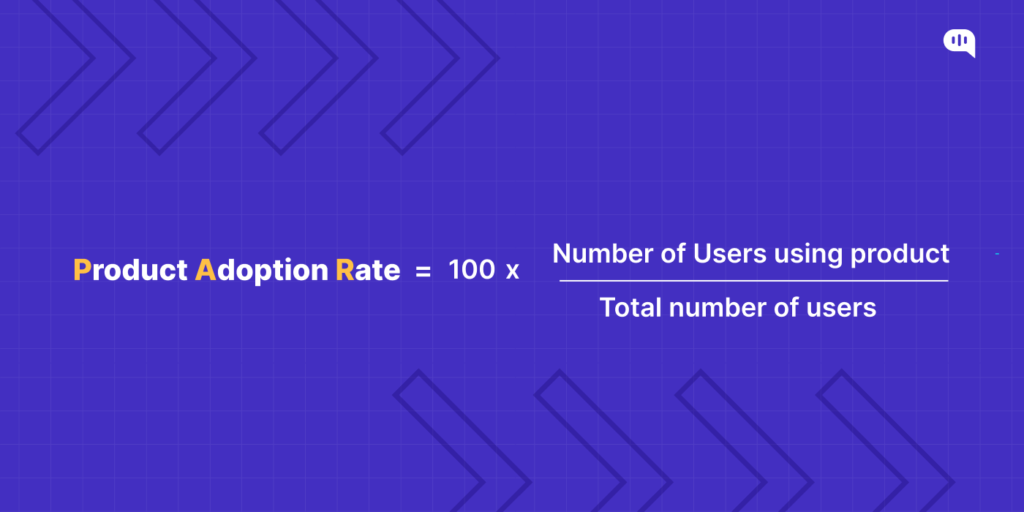
Let’s understand this with an example –
Imagine a fictional e-commerce app called “DressSmart.” The Product Adoption Rate (PAR) of DressSmart measures the percentage of users who have adopted a specific feature, such as order booking, within the app.
Suppose DressSmart has 10,000 users, and out of them, 2,000 regularly use the app to place orders. In this case, the PAR for the order booking feature would be 20%. This indicates that 20% of DressSmart users actively utilize the app for making purchases.
Understanding the PAR helps DressSmart identify which features are popular among users and allows them to focus on enhancing user engagement and satisfaction with the app.
Moreover, if the PAR for a specific feature starts dropping, DressSmart can investigate the reasons behind the decline and take corrective measures to address them.
Conversion Rate:
Conversion rate is the percentage of users who start using your product and continue using it over a period of time. Various factors affect conversion rate. This includes the value proposition of your product, the onboarding experience, and, most importantly, the product itself!!
Retention Rate:
Retention rate is the percentage of people who continue using your product after they have signed up for a free trial. A high retention rate is needed, if you wish to achieve product-led growth. The factors affecting the conversion rate, such as value proposition and the user experience, also affect the retention rate.
Time to Value (TTV):
Time to value is the speed with which a user derives a significant amount of benefit after adopting your product. Factors affecting the Time to Value (TTV) include seamless onboarding, immediate usefulness and a product that is intuitive to use.
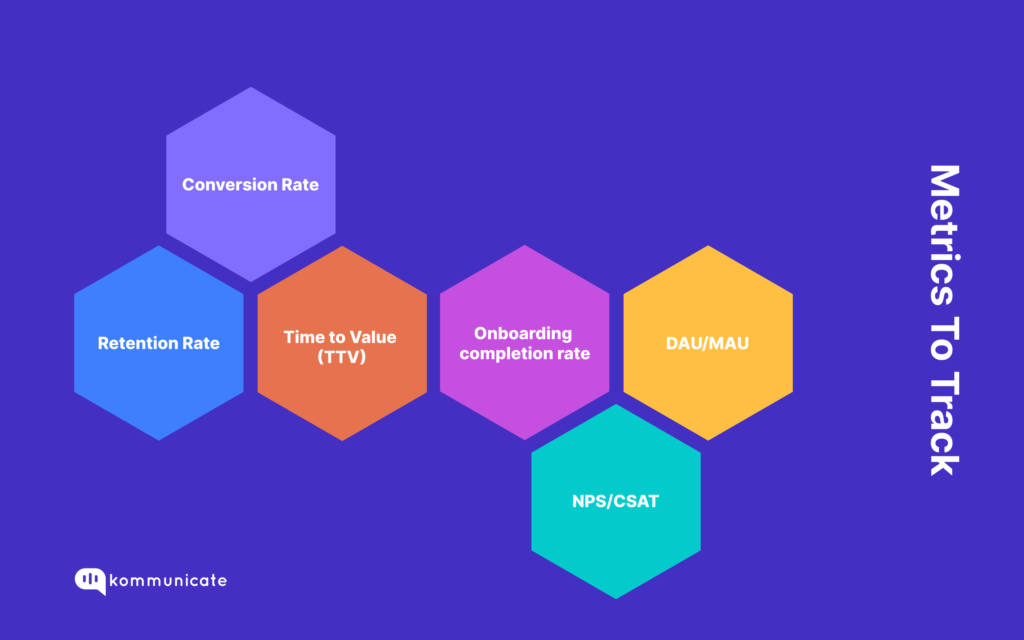
Onboarding completion rate:
This is a measure of the proportion of users who successfully traverse the initial product setup process. This metric helps measure how efficient the user-onboarding process is. A good OCR means that the design is user-centric, and the early experiences that the customers have with your product are positive.
DAU/MAU:
Daily Active Users and Monthly Active Users are a measure of the stickiness of a product. It is also a measure of the frequency with which users engage with the product. A higher DAU/ MAU ratio means people are using your product for prolonged periods of time, signifying lasting user commitment.
NPS/CSAT:
NPS stands for Net Promoter Score and CSAT stands for Customer Satisfaction Score. With NPS, you get an idea of how likely a customer is likely to recommend your product or service. CSAT is a measure of overall satisfaction with the product. Positive NPS and CSAT scores help in retention.
Product adoption rate may vary depending on the acquisition channel, geography, user persona, etc. Breakdown product adoption rate on various factors to find out the areas where improvement is required.
With the right metrics in place, let us now see the various factors that affect Product Adoption.
What factors affect Product Adoption?
- Audience Target: This is the first entry point, if you have the wrong audience coming then no amount of effort will help in fixing the product adoption. The first thing to verify here is to figure out if the visitors you are getting are matching with your ICP.
- Time to value: Time to value is the time it takes for the user to reach the AHA moment. The sooner this AHA moment is, the better.
- Designs: A good product design helps users navigate through the product and reduces the time to value.
A study by Adobe found that companies with great design outperformed others by 219% on the S&P Index over the span of 10 years.
Conduct user interviews and use tools such as FullStory to find the friction points for the user.
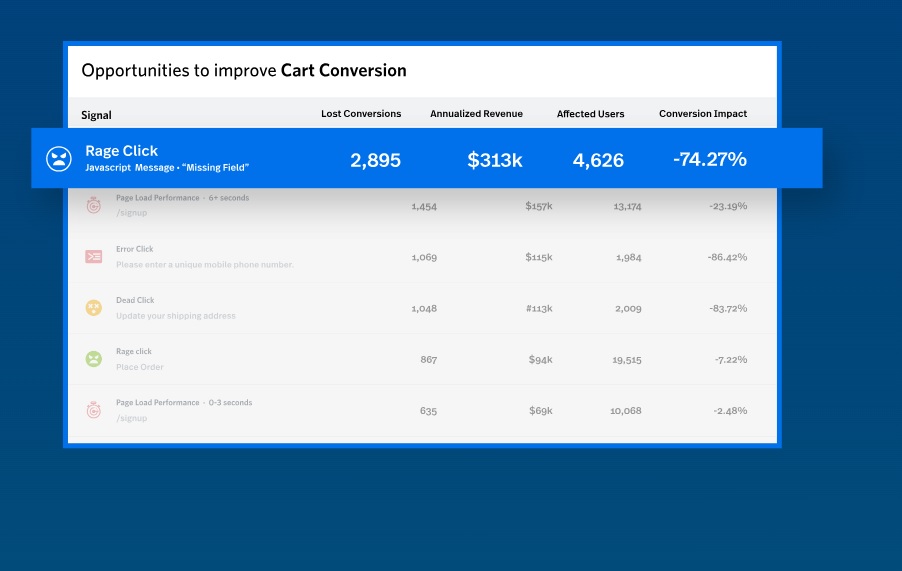
Product Quality: Use tools such as Sentry to track the product bugs and performance. If a user encounters any error, it drops the chances of product adoption significantly.
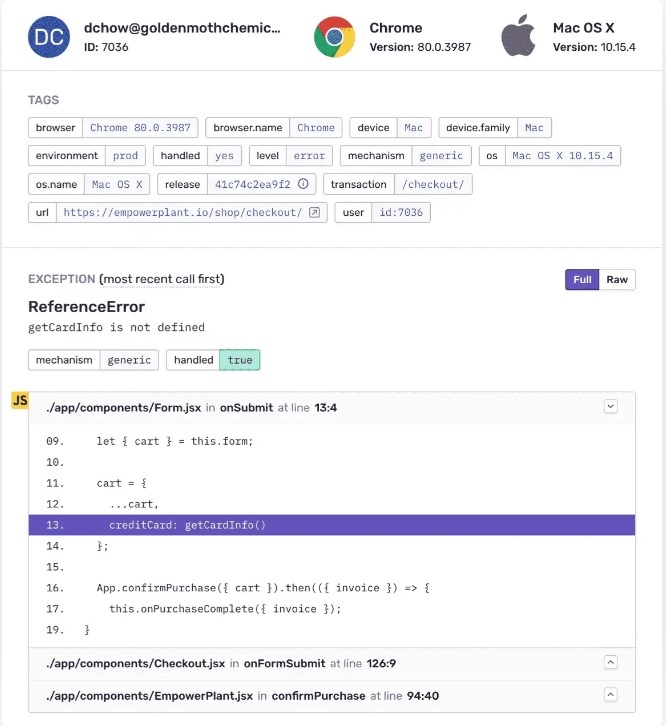
- Customer Support and Service: Ensure users are getting the required help immediately. Imagine a user who encountered some friction before the product adoption, and they need some help. If they don’t get the required help on time, they will leave and move to your competitor. If you have a decent user base, set up an AI chatbot to reduce your support agent’s workload.
- Customer Experience: Customer Experience plays a crucial role in product adoption. It starts right from the time the user came to know about your company brand. Customer experience is about every interaction the user has with your company including your social media posts, website, product designs, customer support interactions, etc.

Steps to Create a Product Adoption Strategy
Following is the step-by-step guide on creating your product adoption strategy.
Step 1: Define your Ideal Customer Profile (ICP)
This is the very first step and the most crucial one. Without an ICP, you will attract various types of customers with different needs, and that will make measuring and improving product adoption very difficult. Once your ICP is clearly defined, inform everyone in your company. From sales, marketing to product development, everyone should be aware of who the ICP is.
Step 2: Validate and align the target audience to ICP
Collect information in the signup or post-signup process to know the audience better. It can be industry, company name, designation, etc depending on your ICP criteria. Below is an example from Kommunicate to collect information to understand the audience better, and it helps in personalizing the onboarding better.
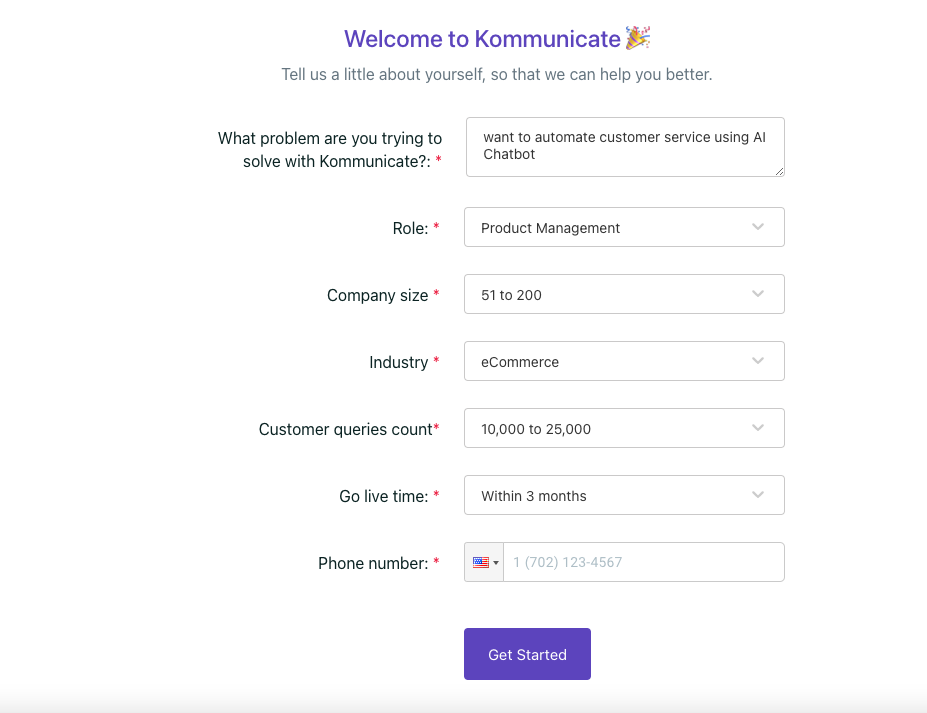
Step 3: Onboarding
Define the user goal and create an ideal path for the user onboarding.
Answer the following questions:
- What is the user is looking to achieve here?
- Which is the 1st thing a user must do? What are the next set of things users must try?
- What are the first few sets of actions your paid customers have taken?
Accordingly, create the set of things and define an ideal path in the Onboarding flow. Make sure not to restrict the users to it, while educating users on the suggested path, keep it flexible for users to jump and explore as well.
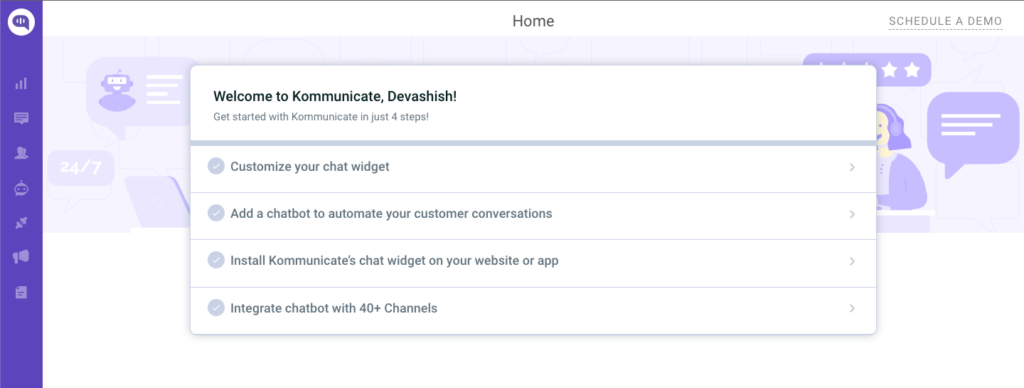

Step 4: In-app Guidance
Create in-app guidance flows to assist users at different parts of the product. There are many no-code softwares available that product managers can directly use without the developer’s dependency. One such tool is Userpilot.
One of the mistakes many products make is to show in-app interactive help one after another for every other feature of the product. Keep things minimalistic and add it where it is really required. Educate users to advanced things when the basic set of things are accomplished by the user.
| New User | Existing User |
| Signup – Make it friction less | Time To Value |
| Personalized User Onboarding Experience | Frequency |
| AHA moment | Retention Rate |
| In-app help | |
| Notify and guide users about new features |
Step 5: Customer Service
Even with the best efforts, there will be instances where users will need help. That’s when customer service plays a critical role in product adoption. If users need help, be available 24×7 to assist them in their journey. If you have a high number of user base, automate your customer service using AI Chatbots.
Here are some statistics to show how critical customer service is to your business, and how it drives product adoption:
i) 58% of customers will pay for better customer service – Forbes.
ii) 80% of the customers will do business with a competitor, if there is more than one bad experience – Zendesk.
iii) 68% of consumers say they are willing to pay more for products and services from a brand known to offer good customer service experiences – Hubspot.
Step 6: Reduce Friction Points
Friction points are the areas which slow down or drop off a user from using the product. It can be bugs, bad design, bad UX writing, or just a complex product.
This process is something that you should do at a regular interval.
Review following things:
- Analyze support chats and email tickets to identify the frequently asked questions, or frequent concerns raised by users
- Use tools like FullStory to watch how the user is using the product, FullStory helps to identify errors, frustrated user sessions, design gaps, etc.
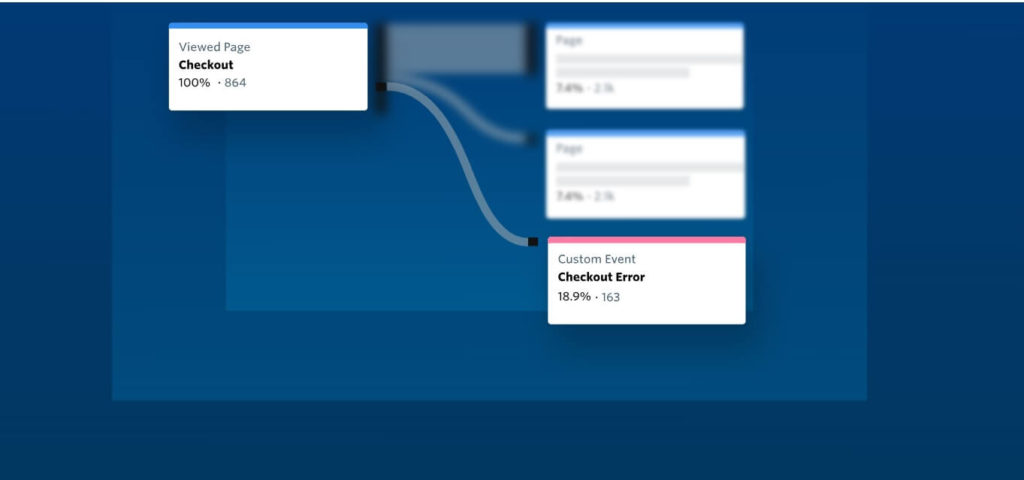
- Create a funnel with each step from Signup to Paid, and figure out where the most drops are happening. Then, further go deep into that part of the funnel.
All the above steps will help you improve the product adoption. We will now take a moment to study the Product adoption curve, to really understand how products can get to mainstream once they “Cross the Chasm.”

Product Adoption Curve – What you need to know
For you to fully succeed in your product adoption journey, it is important that you understand how different groups of people will try out your product over different periods of time.
This is where Geoffrey Moore’s concept of the 5 different adopters of your product comes into picture, which he describes in detail in his now famous book, Crossing the Chasm.
According to Moore, you can classify all the people who will ever try out your product into 5 different groups.
Here is a small gist of each of the groups:
1. The Innovators
The innovators are the tech enthusiasts, people who are unafraid of trying out the latest technologies and taking risks with unknown brands. A good example of an innovator is someone who bought the Nothing phone 1, thanks purely to its word-of-mouth advertising.

The innovators are excellent sources of feedback, and they can help your product greatly by giving you tips to improve the product initially. The downside with innovators is that although they are risk-takers, they are put off by a high barrier of entry to a product, such as a high price. To mitigate this, always consider offering a “freemium” version of the product.
2. Early Adopters
The early adopters are the people who are closer to your ICP, who will derive the maximum value from your product or service. Early adopters can provide excellent insights into product positioning, and are the best sources to create case studies.
An early adopter generally wants faster time to value (TTV), and a product that is more customized to their needs. They are generally more easy to sell your product to, since they don’t mind spending the money if it solves their specific problem.
A well written case study from an early adopter will go a long way in your sales and marketing efforts, since it will act as social proof for the next group of product users.
3. Early Majority
Once you reach the early majority, it is clear that you have found the “product-market fit.”
As you can see from the graph below, this is a critical juncture for your product.
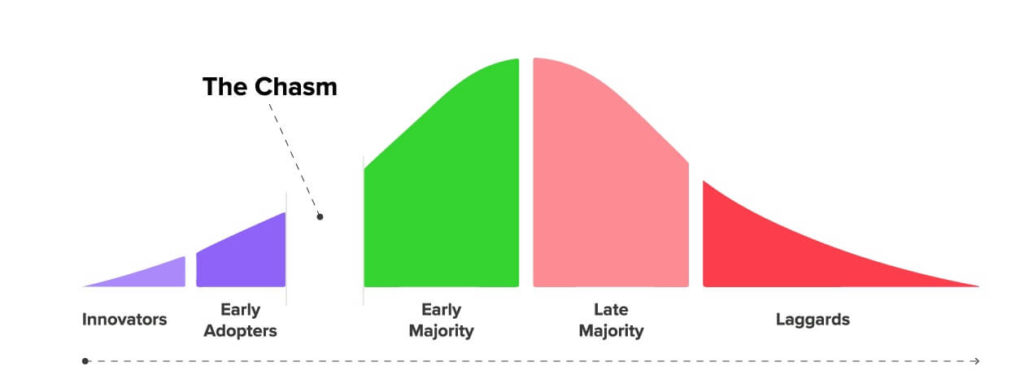
Customers who form a part of the early majority are hopeful that your product will solve their problems. The trick here is crossing the “chasm,” which is a psychological river between your early adopters and early majority.
The best way to do this is by giving a list of case studies and testimonials which you have collected from the innovators and early adopters. Hence, it is important to impress the previous 2 groups of people, who will then take your product to the early majority.
4. Late majority
By this point, people are already aware about your product or service. You don’t need to spend marketing dollars to convince this group of people that your product will solve their problems.
This is generally a smaller group of people who have been slow to adapt to change/ are apprehensive about change. What you need to focus on with the late adopters is how you will overcome their apprehension of not using your product sooner.
A classic example of late majority is someone who snoozes the software update on their computers, to see how the rest of their peers deal with the update.
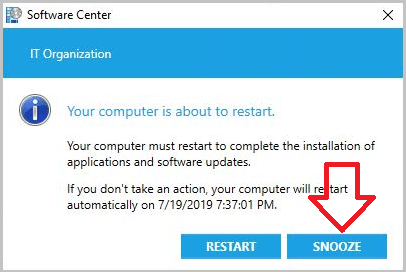
5. Laggards
Laggards form a small percentage of your customers, and are generally people who are really apprehensive if your product will solve their problems.
You can try and change the mind of laggards through clever marketing. However, if you have reached this stage, it is most likely that you have saturated the market. In this case, it is better to innovate on your product or look towards a new offering, so that the business scales sustainably.
And that’s everything we want to tell you about the Product Adoption curve.
As the product keeps evolving, it goes through multiple iterations, design changes, new feature additions, etc. that is why, product adoption process is a continuous process.
To summarize ..
- Your Product Adoption Strategy is working if users are aware of your product and its value add, and are willing to use it on a regular basis.
- Product Adoption Rate is one of the most important metrics you need to track, in order to understand how quickly your customers are starting to use the product.
- A good Product Adoption Strategy consists of 6 steps, starting with the most important one – defining your Ideal Customer profile (ICP).
- Moving people across the chasm in the Product Adoption curve is tricky, but you can achieve it with the help of case studies and testimonials.
At Kommunicate, we are envisioning a world-beating customer support solution to empower the new era of customer support. We would love to have you on board to have a first-hand experience of Kommunicate. You can signup here and start delighting your customers right away.

CEO & Co-Founder of Kommunicate, with 15+ years of experience in building exceptional AI and chat-based products. Believes the future is human + bot working together and complementing each other.






